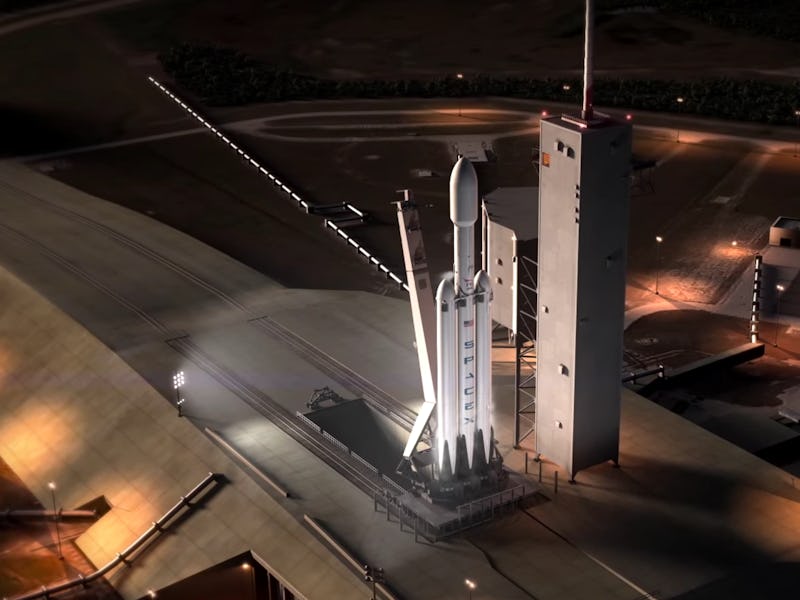Elon Musk Says SpaceX Falcon Heavy Is the Most Powerful Rocket in the World: What Will It Carry?
Get ready for big hauls into deep space.

SpaceX seems to be close to mastering the Falcon rocket. The company has launched a series of successful missions that have carried cargo to the International Space Station and a variety of satellites into low-earth orbit. Perhaps most impressively, SpaceX has even brought the first stage of these rockets back to Earth, landing the rockets on the ground and even on drone pads afloat in the ocean. Now, SpaceX is preparing to launch the most powerful rocket in the world, and the incredible thrust of the Falcon Heavy will significantly expand the capabilities of what it can send to space.
SpaceX executives have not yet decided whether the first launch of the Heavy in November will actually haul any satellites into space, but there is already concerted interest from government and corporate partners. The potential for SpaceX to reuse at least the first stage of the rocket would significantly lower the cost of putting a probe into geostationary orbit, which is needed for many advanced communications satellites.
Whether SpaceX uses the first launch as simple proof of concept or whether it takes some valuable cargo onboard will only slightly affect the timeframe of the company’s planned missions. So, what will the cargo be for Falcon Heavy’s first hauls?
Deep Space Atomic Clock
Falcon Heavy’s 54,400 kg of thrust can go a long way, and the NASA Jet Propulsion Lab’s planned Deep Space Atomic Clock (DSAC) needs a lot of power to put this radical time-keeping device into space. It is essential to know the time in order to track location in space, but the current network leaves satellites waiting for hours to connect. The DSAC uses ionized mercury atoms to watch the clock and is not light, so the first test module is set to launch aboard a Falcon as early as next year.
Green Propellant Infusion Mission
NASA wants to change how we fuel our missions into deep-space, but testing out propulsion systems can prove an expensive diversion from running its current missions. The Green Propellant Infusion Mission (GPIM) may prove longer-lasting, more maneuverable, and stronger than conventional chemical propulsion, but even NASA and the U.S. Air Force sometimes need a budget airline. The first GPIM is expected to reach space next year on a Falcon Heavy for only $45 million.
Mars colonizers
Not to get ahead of ourselves, but the plan of the Falcon Heavy has always been to reach deep space with a particular focus on Mars. When Elon Musk talks about reaching and beginning to colonize Mars within the coming decades, he’s at least half-serious because of technology like this rocket. The new Falcon may travel to Mars as early as 2018, putting the onus on scientists to figure out how to make life on Mars practical – and soon.
With our ride ready, we just need to load up all the right stuff, and we could be chilling on the red planet before we know it.
Correction: An earlier version of this article incorrectly stated that astronauts had been transported to the ISS by SpaceX.